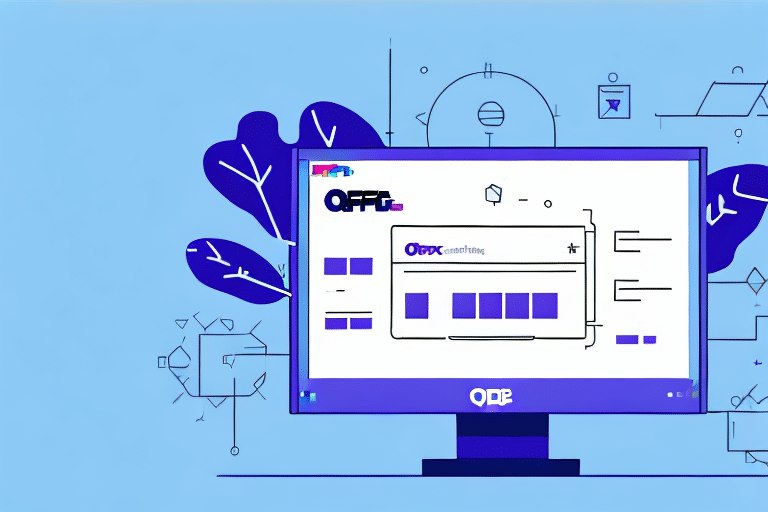How to Export Whole Numbers Only from UPS Worldship to ODBC
Are you struggling to export UPS Worldship data to ODBC? Do you only need whole numbers and want to avoid exporting decimal values? Look no further, as this step-by-step guide will help you export whole numbers only from UPS Worldship to ODBC. While this process may seem daunting, it is essential for improving your business's efficiency and productivity by accurately analyzing your data.
Understanding UPS Worldship and ODBC
Before diving into exporting whole numbers, it's crucial to understand the fundamentals of exporting data from UPS Worldship. UPS Worldship allows you to export data in various formats, including Excel, CSV, and ODBC. ODBC stands for Open Database Connectivity, which provides a standardized interface for accessing different database systems. Once you export your data to ODBC, you can use software like Microsoft Access or Excel to analyze your data effectively.
When exporting data from UPS Worldship, you can select specific fields to export, meaning you can choose to export only the data relevant to your analysis rather than the entire database. Additionally, UPS Worldship allows you to schedule automatic exports, saving you time and effort in the long run.
Another useful feature of UPS Worldship is the ability to export data from multiple databases simultaneously. This is particularly beneficial if you have multiple locations or departments using different databases. By exporting data from all these databases into a single file, you can easily compare and analyze the data across your entire organization.
Benefits of Exporting Whole Numbers Only
Exporting whole numbers only offers several benefits:
- Reduced File Size: Whole numbers consume less storage space compared to decimals, resulting in faster load times and lower storage requirements.
- Improved Accuracy: Avoids potential rounding errors or truncation of decimal values, ensuring the accuracy of your analysis.
- Streamlined Workflow: Simplifies data interpretation, making it easier to identify patterns or trends without the complexity of decimal values.
By exporting whole numbers only, you enhance the efficiency of data processing and reporting, leading to more informed decision-making based on precise data insights.
Step-by-Step Guide to Exporting Whole Numbers from UPS Worldship to ODBC
Follow this comprehensive guide to export whole numbers from UPS Worldship to ODBC:
- Open UPS Worldship: Launch UPS Worldship and navigate to the home screen.
- Select Reports: From the dropdown menu at the top of the screen, choose Reports.
- Choose Export: Select Export as your report type and choose the specific information you wish to export.
- Select ODBC Driver: Click Export and choose the ODBC driver you intend to use.
- Choose Database System: Select the ODBC-compliant database system where you want to export your data and choose the table for storage.
- Export Whole Numbers: Select the option to "Export Whole Numbers Only" from the available settings.
- Finalize Export: Click Export to complete the process. Your data will be exported successfully.
Note: Depending on the database system used, exported data may be rounded up or down. It's recommended to double-check the exported data to ensure accuracy and make any necessary adjustments.
Troubleshooting Common Issues
While exporting whole numbers only is straightforward, you may encounter some issues:
Incorrect Export Settings
One common issue is forgetting to select the "Export Whole Numbers Only" option, resulting in decimals being exported. Always double-check your selected options before exporting your data.
Wrong ODBC Driver Selection
Choosing an incorrect ODBC driver can lead to errors during the export process. Ensure you have the correct driver installed and selected before proceeding.
Formatting Issues
Exported data may not be formatted compatibly with the software you're importing it into, causing errors or discrepancies. Verify the formatting requirements of your target application and adjust your export settings accordingly.
Data Discrepancies
Errors or inconsistencies in the original data source can lead to inaccuracies in the exported data. Thoroughly review and clean your data before exporting by checking for duplicate entries, correcting errors, and ensuring proper formatting.
Analyzing Exported Data with Excel
Once your data is exported to ODBC, you can utilize Microsoft Excel to filter and analyze it effectively:
- Import Data: Open Excel, navigate to the Data tab, click on "From Other Sources," and select "From Microsoft Query."
- Select ODBC Driver: Choose your ODBC driver and connect to the database.
- Choose Data Table: Select the table where your data is stored and click "Return Data to Excel."
- Analyze Data: Use Excel's tools like filters and pivot tables to analyze your data more effectively.
Visualization: Create charts and graphs by selecting your data and navigating to the Insert tab. Choose the desired chart type to visualize your findings.
Formulas and Functions: Utilize Excel's formulas, such as SUM to aggregate numbers or AVERAGE to calculate mean values, enhancing the accuracy of your data analysis.
Optimizing Your UPS Worldship and ODBC Setup for Efficient Exports
Implement these tips to enhance the efficiency of your UPS Worldship and ODBC setup:
- Update ODBC Drivers: Regularly update your ODBC drivers to the latest versions to maintain compatibility with your database systems.
- Minimize Export Fields: Export only necessary fields to reduce file size and improve processing speed.
- Optimize Table Structures: Ensure your database tables are optimized for ODBC and UPS Worldship to prevent data issues.
- Regular Testing: Test your exports regularly to ensure they function correctly and efficiently.
- Customize Export Templates: Tailor your export templates to align with your specific data analysis needs.
Batch Shipping: Utilize UPS's batch shipping feature to process multiple shipments simultaneously, saving time and increasing efficiency.
Database Maintenance: Regularly clean and maintain your database by removing duplicates, correcting errors, and updating outdated information to ensure accurate and up-to-date exports.
Advanced Uses for Your Exported Data
Exporting whole numbers from UPS Worldship to ODBC opens up various opportunities for gaining business insights:
Supply Chain Optimization
Analyze shipping and delivery patterns to determine the most efficient routes and methods. Identifying delays or bottlenecks allows for targeted improvements, reducing costs and enhancing customer satisfaction.
Customer Behavior Analysis
Track customer orders and shipping information to gain insights into product popularity, regional demand, and customer loyalty. This data can inform marketing and sales strategies, leading to increased sales and revenue.
Inventory Management
Use exported data to monitor inventory levels, forecast demand, and streamline stock management, ensuring you meet customer needs without overstocking.
Sales Trend Analysis
Identify sales trends over time to make informed decisions about product offerings, pricing strategies, and promotional activities.
Comparison of Other Tools and Methods for Exporting UPS Worldship Data
While ODBC is a robust tool for exporting UPS Worldship data, other software tools and methods may better suit your business needs:
- Crystal Reports: A powerful reporting tool that allows for advanced data analysis and visualization. Learn more.
- UPS CampusShip: Designed for large campuses and organizations, CampusShip offers streamlined shipping solutions. Explore CampusShip.
- Third-Party Plugins: Various plugins and integrations are available to facilitate data export and synchronization with other software platforms.
Each option has its advantages and drawbacks. It's crucial to evaluate which tool aligns best with your business requirements and data analysis goals.
In conclusion, exporting whole numbers only from UPS Worldship to ODBC is a straightforward process that offers multiple benefits, including enhanced data accuracy and streamlined workflows. By following this comprehensive guide, you can optimize your data export process, leading to more informed business decisions and a competitive edge in the marketplace.
Ensuring the accuracy and recency of your data export process is vital. Regularly review and update your export settings, maintain a clear understanding of the data you’re handling, and utilize reliable data management practices to maximize the value of your exported data.






















